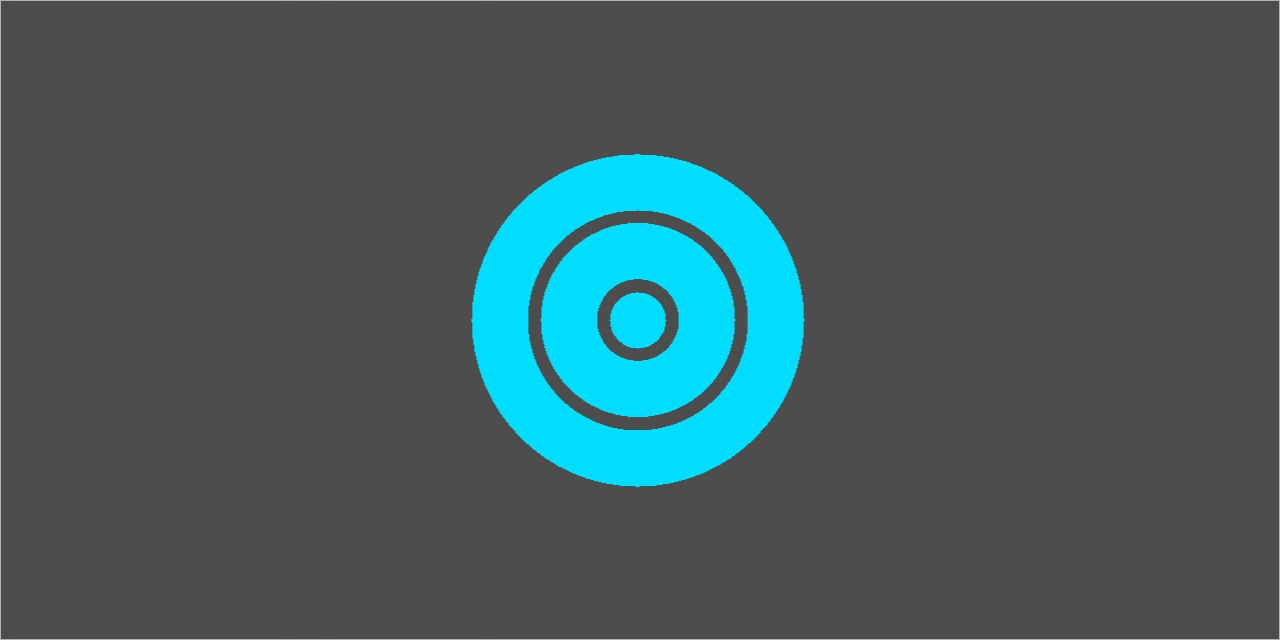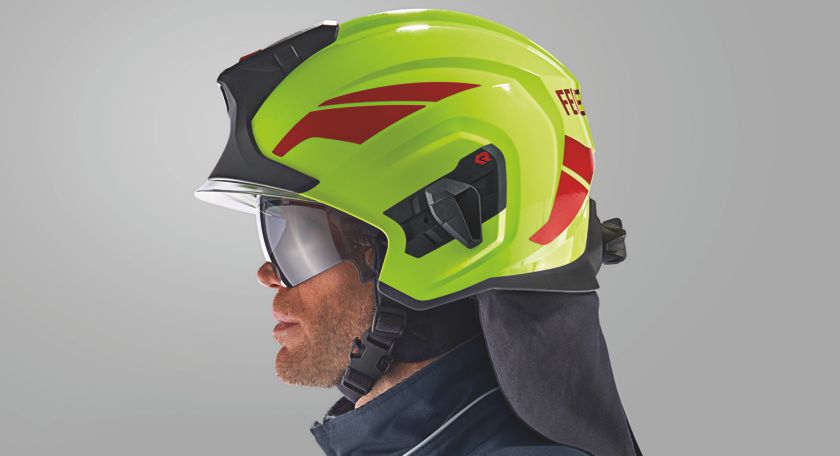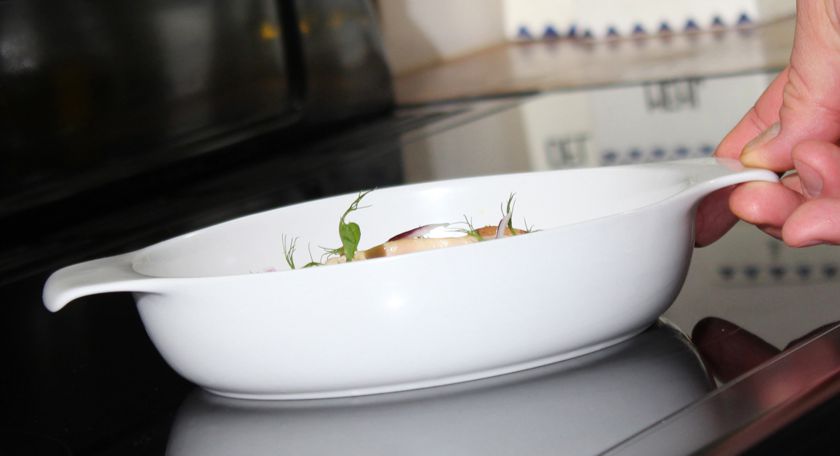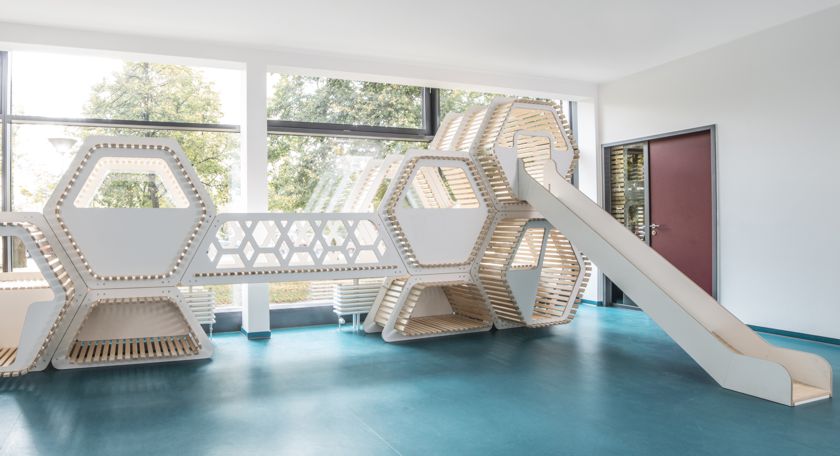
Focus Open 2016
Baden-Württemberg International Design Award
Results
The competition was first held in 1991 – initially as the International Design Award of the State of Baden-Württemberg, from 2000 on as the Baden-Württemberg International Design Award. For several years, the competition specified various contemporary topics such as energy, working environments, durability etc., before opening up to all areas of product design in 2009 and calling for entries under the Focus Open label. Every year since, it has been inviting companies and design agencies from all over the world to submit their most innovative product and concept solutions and enter the competition for outstanding and forward-thinking design. Under the Focus Open label, the Baden-Württemberg International Design Award has become a permanent feature of the competition scene in Germany and abroad and is held in high esteem by companies and design agencies alike.
Participants and awards
This year’s Focus Open jury evaluated 227 entries in a wide range of different categories. The product innovations came from Austria, Belgium, China, Denmark, Germany, Italy, the Netherlands and Switzerland. The jury selected a total of 68 prize-winners from amongst all the entries submitted. The premium award Focus Gold for outstanding design went to 7 products. 22 products were presented with the Focus Silver for above-average design achievements, whilst 39 products received the Focus Special Mention for innovative design achievements.
Categories
- Production, assembly, logistics
- Medicine, rehabilitation, geriatric medicine
- Bathrooms, sanitaryware, wellness
- Kitchen, household
- Tableware and kitchenware
- Home interiors
- Contract interiors
- Ambience, lifestyle
- Lighting
- Communication, audio, video, optical equipment
- Leisure, outdoor
- Sport
- Children, family
- Architecture
- Public design
- Transport, traffic
- Design studies
- Sustainability, ecology
A fair jury, a fair assessment
The entries were evaluated by the following experts in the course of a two-day judging session:
- Prof. Werner Baumhakl, office industrial design, CH
- Stephan Niehaus, Hilti AG, LI
- Annke Osthues, Osthues Design, DE
- Alexander Rybol, Blocher Blocher Partners, DE
- Prof. Barbara Schmidt, KAHLA/Thüringen, Porzellan GmbH, DE
- Kyoko Tanaka, yellow design GmbH, DE
The jurors based their assessment on the following design criteria:
design quality, functionality, innovativeness, ergonomics, interface design, usability, product typography, ecology, sustainability, perceived value, look and feel, emotionality, brand fit.
A valuable distinction for the prize-winners
Being honoured with a design award sends a signal that the submitted work is held in high esteem by carefully selected experts. It is a signal that can have a positive impact within big companies too, and represents an important endorsement for all those involved with the development process. It can boost both motivation and identification with the company and its products and help reinforce confidence in the collaboration between designers and companies.
Production, assembly, logistics
Heros-Titan
Firefighting helmet

Design
Formquadrat GmbH
A-4020 Linz
www.formquadrat.com
Distributor
Rosenbauer Deutschland GmbH
D-14943 Luckenwalde
www.rosenbauer.com
Helmets ought to be light, fit perfectly and provide effective protection in dangerous situations. That particularly applies to firefighters’ helmets, which have to withstand the very toughest conditions and provide much-needed support for their users. Thanks to its bi-onically-inspired construction, the shell of the Heros-Titan is extremely sturdy despite its reduced thickness, thus helping keep the total weight to an incredibly light ∂.3 kilograms. The two overlapping polycarbonate visors (available in a choice of three different finishes: gold-coated, tinted or clear) provide excellent visibility and ensure optimal protection for the face. In addition, the product concept allows for the integration of a high-performance lamp over the forehead, a thermal imaging camera or a neck protector. The interior fittings can be washed and replaced, while the knob on the outside can be used to adjust the fit even when wearing gloves. At the same time, the exterior design of the helmet is a compelling combination of functionality and emotional appeal. The ridge that starts over the forehead evokes the crest on the helmets of ancient warriors, while the edgings and bevels running around the sides create a powerful, dynamic look.
Jury:
All the functional elements – not just the adjustable features and visors but the headlamp as well – are sensibly positioned, well integrated and designed for ease of use, even when wearing gloves. The extremely meticulous concept even interprets structural reinforcements as elements of the design. All in all, the helmet visualises maximum safety and state-of-the-art technology – due in no small part to the considerable emotional appeal of its design.
Medicine, rehabilitation, geriatric medicine
Ganymed G3
Walking aid

Manufacturer
Ganymed GmbH
D-82335 Berg
www.ganymed.eu
Design
Inhouse
Karen Ostertag
Distributor
Ganymed GmbH
D-82335 Berg
www.ganymed.eu
Walking on crutches is very strenuous and puts considerable strain on both the wrist and shoulder area. Moving the contact point of the walking aid forward considerably reduces that strain, thereby largely eliminating secondary problems such as carpal tunnel syndrome. It is this insight that forms the basis of the principle behind the Ganymed walking aid, the third generation of which has been equipped with new, optimised features. The extendable telescopic tube with an oval cross section is for instance made of particularly light aluminium, the handle section of fibre-reinforced plastic. The openwork struture of the handle is based on the lightweight construction credo that material is only necessary where forces occur. The same principle governs the design of the tips, which come in three hardnesses to suit different users and surfaces. The walking aid weighs just 500 grams and, thanks to the counterbalancing shape of the handles, can be set aside in an upright position when not in use – an advantage with considerable practical benefits. Other comfort-enhancing features include better ventilation of the user’s palms due to the open structure and a choice of four different materials for the ergonomic hand rest.
Jury:
Because its aesthetics make it resemble a piece of sports equipment rather than a medical appliance, the walking aid doesn’t stigmatise its user. Ergonomically too, it has a great deal more to offer than conventional crutches, whereby the handles with their comfortable hand rests particularly stand out. An extremely precise solution has been found for the transition between the tube and handle too. Thanks to its bionically-inspired structure, the latter manages with an absolute minimum of materials and has a cushioning effect as well.
Tableware and kitchenware
Cook & Serve Inductherm
Cookware

Manufacturer
Eschenbach Porzellan Group –
neue Porzellanfabrik Triptis GmbH
D-07819 Triptis
www.eschenbachporzellan.de
Design
Inhouse
Claudia Bischoff
Distributor
Eschenbach Porzellan Group –
neue Porzellanfabrik Triptis GmbH
D-07819 Triptis
www.eschenbachporzellan.de
Food is normally cooked in pots and pans before being served in bowls and on platters. The range of porcelain cookware proposes an alternative to this classic procedure with a totally different concept. Thanks to a new, extremely temperature-resistant porcelain body and a specially developed non-stick glaze, the porcelain containers can be used for cooking on all kinds of hobs and are particularly suitable for induction cookers. The food can then be left in the cookware, put on the table and eaten straight away – eliminating the nconvenient and time-consuming process of transferring it to different bowls. A great deal of attention has been focused on the timeless, understated design of the containers, handles and lids.
Jury:
The aesthetic quality of cookware needs to be very high indeed if it is to cut a stylish figure on a nicely set table. This new range meets that requirement in exemplary fashion. Made from a special kind of porcelain with low thermal expansion, the containers can be placed directly on hobs – even induction cooktops – and used for preparing food. This is a new feature for the consumer sector.
Lighting
Avveni
Lighting system

Manufacturer
Sattler GmbH
D-73035 Göppingen
www.sattler-lighting.com
Design
code2design
D-73760 Ostfildern
www.code2design.de
Distributor
Sattler GmbH
D-73035 Göppingen
www.sattler-lighting.com
One lamp head for a wide range of different luminaires: among other things, the Avveni system includes recessed downlights, wall, reading and floor lamps, as well as a series of pendants. What all the different models have in common is the perfectly circular and flat lamp head with LED light sources and various adaptor lenses for reducing glare and changing both the colour of the light and the beam angle. The head uses a magnetic ball-and-socket joint to dock onto the various supporting structures; besides rotating a full 360 degrees, it can be tilted up to ∂80 degrees as well. Avveni creates a particularly interesting effect as a pendant light, consisting of an understated, multibranched supporting structure fitted with between three and ∂8 lamp heads. This makes it possible to equip rooms of any size with an identical lighting structure. In the smaller versions with up to five lamp heads, the power is supplied via the suspension cables.
Jury:
Its ingenious yet simple joint sets this lighting family apart from other solutions available on the market. The magnetic attachment permits flexible adjustment of the light, while the interchangeable lens makes for even greater adaptability. The modular design permits the option of adding further derivatives with the same clear yet sculptural design language.
Children and Family
Spielnester
Activity system
Manufacturer
Aufmberg GmbH & Co. KG
D-96224 Burgkunstadt
www.aufmberg.com
Design
Inhouse
Distributor
Aufmberg GmbH & Co. KG
D-96224 Burgkunstadt
www.aufmberg.com
Designed for children between the ages of two and six, the play nests consist of individual modules shaped like the cells of a honeycomb. These elements are put together to create more complex structures that can either be used as freestanding configurations or attached to the walls. They are intended for use in preschools and aim to promote motor skills, improve spatial and haptic perception and boost the children’s self-confidence. The system’s natural materials, safe construction method and variability make it ideal for creating an indoor adventure world. Besides the honeycomb modules in various depths, other elements –for instance for the front and back of the ≫cells≪ –make meaningful additions to the system. Despite their space-consuming qualities, the play structures nevertheless create a very transparent, light and friendly effect, while the absence of eye-catching colours gives the system a calm, relaxing and understated look.
Jury:
A thoroughly original system that offers children diverse and exciting opportunities for activity and play. Besides its impressive variability and use of materials, the system also features compelling aesthetics that deliberately refrain from childish cliches. Thanks to their furniture-like character, the play nests blend in naturally with any preschool activity playroom.
Public design
Den Bla Planet
Exhibition concept

Client
National Aquarium Denmark
DK-2770 Kastrup
www.denblaaplanet.dk
Design
Atelier Bruckner GmbH
D-701376 Stuttgart
www.atelier-brueckner.de
Located right on the Oresund Strait, the spiral-shaped new building of Denmark’s National Aquarium has ∂0,000 square metres of exhibition space and no fewer than 53 individual aquariums. The exhibition concept, which is also new, superimposes a layer of media on the dark rooms full of living attractions. Interactive exhibits, immersive installations and a specially developed app put the finishing touches to the wealth of information available. The Species Information System provides details about the numerous sea creatures that inhabit this special museum. All the different formats, media and illuminated floating panels use the same graphic design, which was specially developed for the project in the form of a manual. The smartphone app also enables visitors to invent their own fish and release them into a virtual aquarium.
Jury:
The intelligent use of various media to link virtual and real underwater worlds makes the visitor part of the show and provides valuable guidance during his complex and exciting journey through the aquarium. The concept attaches great importance to interaction and additional levels of information that meet the needs of all age groups in exemplary fashion, thereby creating an intense and exciting experience.
Design studies
Genius Cab Radlader-Kabine
Wheel loader cab

Manufacturer
CAB Concept Cluster: Fritzmeier Systems, Aurora,
Bosch, Grammer, Hella, Hydac, Mekra Lang,
Savvy Telematic Systems, S.M.A. Metalltechnik
Cosulting
Verband VDBUM, Max Bogl
Design
D-85625 Baiern
www.lumod.com
TU Dresden Fakultät Maschinenwesen
D-01062 Dresden
www.technischesdesign.mw.tudresden.de
This cab concept is the work of a long list of component manufacturers, designers and industry associations who have joined forces in the CAB Concept Cluster to create an innovation platform for heavy equipment cabins. Developed specially for wheel loaders, the cabin has a wealth of new technological features and aims to make the operator’s working environment safer, more comfortable and more ergonomic. That includes optimised visibility thanks to the multi-panel windscreen and back-up cameras, newly designed control elements and a cabin ceiling made of light-emitting textiles that visualise what the proximity sensors detect. LED headlights and LED signature lights ensure the vehicle is clearly visible and provide adaptive lighting. The aluminium structure reduces the weight of the cab by 30 percent, while an addon safety structure made of steel profiles provides additional protection. The Genius Cab is the result of an interdisciplinary development approach and initially intended as a technology demonstrator that will later serve as a basis for large-scale production.
Jury:
Above all, the concept improves the quality of the operator’s workplace and is impressive for its functional bodywork. At the same time, the user guidance takes an interesting new approach, the field of vision is much bigger than before and ergonomic aspects have been given admirable consideration. Finally, the top-quality design language is extremely consistent and easy to understand.
